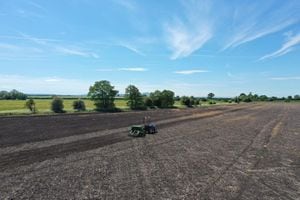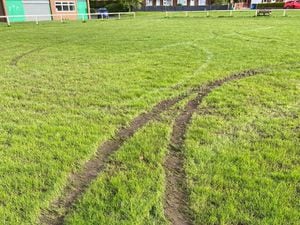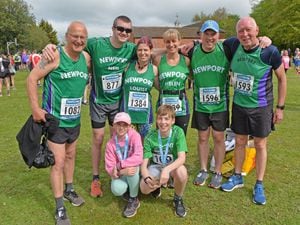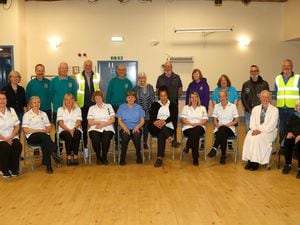Shropshire's ground-breaking autonomous farming project marks first major success
Social distancing was ensured as a revolutionary robot farming project based in Shropshire completed its first major operation under lockdown.

The Hands Free Farm (HFF) at Harper Adams University near Newport has successfully drilled a cover crop using autonomous vehicles, a year after the project launched.
A cover crop is intended to keep the soil viable rather than to be harvested.
The HFF is a three-year long project which scales up to 35 hectares and is run by Harper Adams University, Precision Decisions (a Map of Ag company), Farmscan AG and Agri-EPI Centre.
By the end of the project, the team hopes to have a fleet of autonomous small vehicles working in swarms which can be operated from the farm office, ready for commercialisation.
When the project started in May last year, the original plan for year one had been to drill two winter crops and a spring crop across its five fields. However, due to the poor winter weather experienced in the UK, winter drilling was postponed in the hope that it would all be done in spring.
These hopes were dashed with the onset of the coronavirus pandemic and social distancing. The team had prepared to start drilling before March 27, the day Princess Anne was due to visit the project, but the lockdown announcement on March 23 spelled the end of those plans.
'Drilling a cover crop wasn't the original plan, but it will be good for the soils'
However, the team was not deterred. They continued to work on the project from their individual homes so that they can get back on the ground when restrictions are relaxed.
The team has successfully drilled two fields with the cover crop, while abiding by social distancing guidance.
Kit Franklin, senior agricultural engineering lecturer, said: “Although drilling a cover crop wasn’t the original plan, nor even plan B or C, it will be good for the soils. It should also help the fields be flatter and more forgiving next year.
“This drilling has still provided a useful learning process; we’ve seen that the system is better than ever before and that we’ll be able to analyse the drilling performance when the crop emerges. This will enable us to improve the mapping ahead of working on combinable crops next year.”
For the first time, the team drilled the headlands. Operations manager at Precision Decisions, Martin Abell, said: “The drill lifted a little too early on entry into the corners, so that’s somewhere we can improve.
"This happened because we decided to take a conservative approach to corners in the beginning to avoid potential problems caused by pulling the drill through tight angles.”
Callum Chalmers from FarmscanAg said: “We’ve seen how important it is for implement control systems to be flexible and seamlessly adapt for farming conditions this year at HFF.
“It was excellent to see the new control system drilling the cover crop over headlands for the day completely driverless. The row spacings turned out great and we’re looking forward to improving the drill’s corner angle turns for the next run.”
'The potential learnings couldn't be missed'
The team hopes to complete a harvesting operation later this year, on a field that has been drilled with a spring barley crop by the Harper Adams University Farm using conventionally-sized manned machines.
“This option allows the testing of the combine harvester in a year when it would otherwise be impossible to work on a combinable crop within the HFF,” said Mike Gutteridge, mechatronics senior graduate research assistant.
“The potential learnings from this are an opportunity that couldn’t be missed.
“However, for us to be able to harvest, we are heavily reliant on specialist components being delivered from international suppliers which may not be possible this year due to the current situation.”
Mechatronics and unmanned aircraft system researcher Jonathan Gill captured footage of the drilling by drone.
He said: “The drone footage has more uses than just social media. It’s able to capture the full picture of our progress, and allows future analysis of our path planning, steering settings and timings for the tooling going in and out in the field. We’ll be able to look back on these and compare and improve if required.”
Follow the Hands Free Farm’s progress on Twitter and YouTube.





